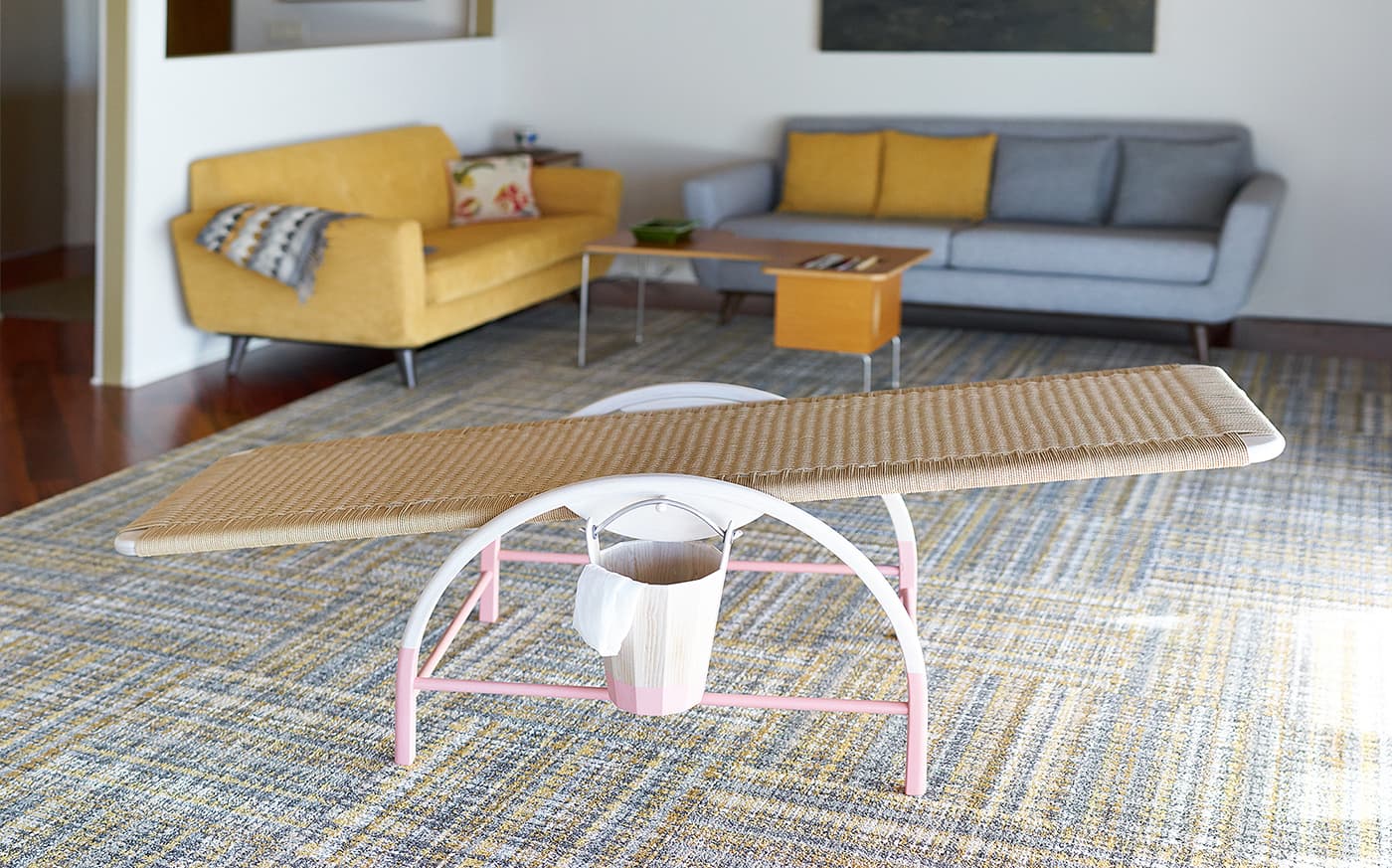loading...
Adam Manley, Ordinary Rendition Series: WTRBRD, 2018

Ash, danish cord, fabric; 6′ long x 30″ wide x 24″ tall
Photo courtesy of the artist.
Artist Statement:
This piece, and the accompanying series addresses the histories of violence that are behind so many elements of our everyday lives, in particular, those luxury items that we use to mark our status and fill our homes. We are starting to become aware that we cannot ignore these histories, but instead must address them. This work examines the interplay between desire, in the form of sleek, high-end design objects, and repulsion, as we are forced to look at the events and actions that have allowed us to live the lives that we live. It looks at our level of comfort with violence and the destruction of the other, and how quickly we adapt to daily exposure to that.
I created this piece as a part of a series that is still ongoing, looking at various historical torture devices, and translating them into sleek, contemporary, desirable pieces of furniture. Luxury items through which we define our status in the world and relate ourselves to our spaces. Our constant exposure right now, to images and documentation of acts of violence, and our ability to adapt and move on, even watch multiple times, is at the heart of this work. That somewhere deep in our collective consciousness, lies a willingness, ability, and even desire, to destroy people to get our own way.
I use wood, and more importantly, the language of contemporary design and furniture making, to address and convey messages because I find that the potential for this format is nearly limitless. As a visual language, as a historical set of objects, as a nearly universal relationship, furniture can contain a multitude of meanings. I look to play our collective and historical relationships with these objects off of our personal relationships with them. Each person comes to the interaction with a different set of past experiences and therefore understands how they relate to furniture, and at the same time, our various cultural relationships with them, as with most common forms, are still underlying and coloring how we see those things in the world. Furniture, in some form or another is nearly universal. It taps into a range of deep histories: histories of artistry, craft, cultural growth, and technological advancement, as well as those of oppression, violence, exploitation, and destruction. These histories are not distinct from one another, but intertwined.
My hope is that voters will look at this work and remember that, while we are witnessing an extremely turbulent time, and the stakes have rarely been higher, the battles that we are fighting now, go far beyond recent history and in fact color everything that we know about the world. That each decision we make, even in the objects we surround ourselves with (maybe especially, in fact) have historical context and complex pasts. Our willingness, and at times eagerness, to forget the past and what has had to happen for us to be where we are and have what we have, works against us again and again.